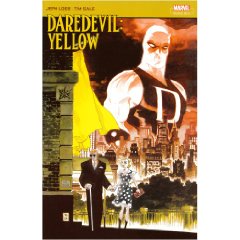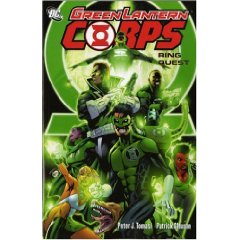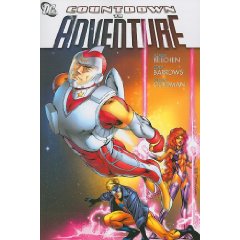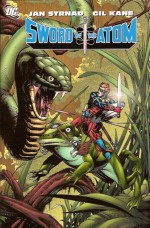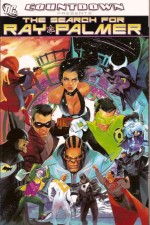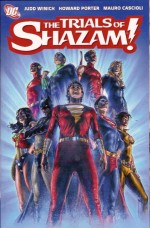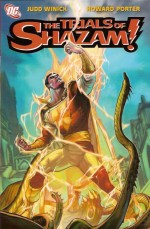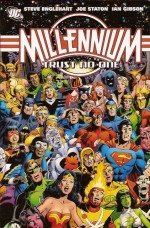
By Alan Moore & Dave Gibbons (DC Comics)
ISBN13: 978-1-85286-024-0
I’m not going to review Watchmen: there’s already too much hype around because of the movie. But since that kind of media overkill can have a detrimental effect on a property I am going to tell you why – and even how – you should read the graphic novel.
Originally released as a twelve-part maxi-series from September 1986 to October 1987, the work was originally commissioned as a reworking of the Charlton Comics “Action Hero” line (Blue Beetle, The Question, Peacemaker, Nightshade, Thunderbolt and Captain Atom) and follows the events that develop after one of those characters is murdered on an Earth very like yet radically different from our own.
That’s all the plot you get from me.
Watchmen is the perfect example not only of the perfect superhero tale, liberated as it is from the commercial tyranny of periodical publishing, but also of just how the nature of graphic narrative, the seamless marriage of picture, word and symbol, fundamentally differs from all other art forms.
Comics as a business cannot allow valuable properties to wither or die. Their intrinsic value is not as vehicles for great stories but as a means of assuring sales. Superman, Robin Hood, Captain America (and Bucky), Leonidas of Sparta, Hal Jordan, Roland, Barry Allen: in the pantheon of heroic mythology who stayed dead and who got better (or worse yet, replaced)? The great themes of Life and Death, Courage and Responsibility, Duty, Sacrifice and Victory lose their worth if the hero has a guaranteed “get out of Valhalla free” card.
And I’m not saying that any film, TV show, radio play, novelisation or even musical of a graphic novel is necessarily less good than the original material – but they are never a substitute or successor to it. Beyond a basic, fundamental sharing of textual moments and characters they are different. And it works both ways: I don’t care who draws Casablanca or scripts House on the Borderland; the only way to appreciate a masterpiece is in the original form that its creators crafted. Everything else is well- intentioned homage or scurrilous cashing in no matter how much you enjoyed it, or indeed how well the adaptation worked on its own terms. Kubick’s The Shining is not Steven King’s, Romeo and Juliet is a play, not an extended pop-video, and not even a ballet; and South Pacific is a great musical but not the awesome novel written by James A. Michener.
How many of you who have read League of Extraordinary Gentlemen or V For Vendetta prefer or are even honestly satisfied by their filmic incarnations?
Watchmen uses its antecedents; it cherishes and celebrates them. It tells a tale with a beginning, a middle and a conclusive end, and tells it brilliantly. It neither deconstructs nor wields a revisionist machete to the core themes of super-heroic tradition. Crusading Legacies, Justice rendered by the individual not society, Costumes, Gadgets, even death-traps and masterminds are accepted on their own terms, not cynically mocked whilst being exploited.
The art by Dave Gibbons is superb and usually understated. At no moment is the reader unsure how to proceed, never does the drawing kidnap the attention, and at no time in this alternate world do we break the flow to wonder at what the intention was: whilst reading, that world is completely real.
Whatever your position on the film, positive or not, I beg you to read the book if you haven’t already. And I’ll even provide these handy “rules for reading Watchmen”:
1) Read the text pages: they’re important and there for a reason.
2) Look at each picture properly: what’s happening at the back, middle and sides of the panel are usually more important than what’s occurring in the foreground.
3) Pay attention: this is not a work to browse. Everything, EVERYTHING has been constructed to work as part of a perfectly completed whole. Nothing is irrelevant – not even the pirate comics stuff.
I’m writing this using my 1987, Graphitti Designs limited, slip-cased collected edition which has loads of extra features in the back but there are many versions available. Heck, even my local library has a couple of copies. There is no better superhero tale ever told. You owe it to yourself to see it in the manner it was made for.
© 1986, 1987 DC Comics. All Rights Reserved.

